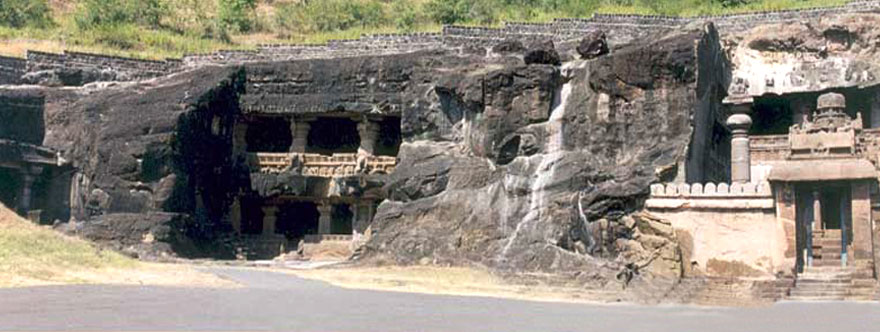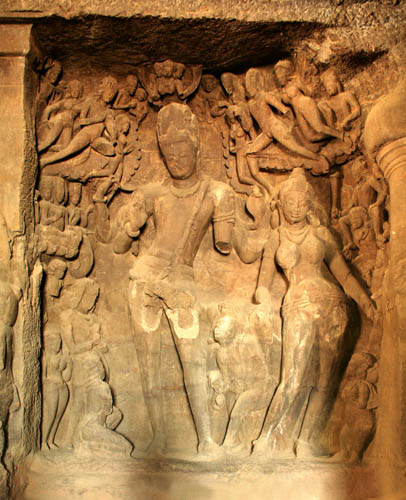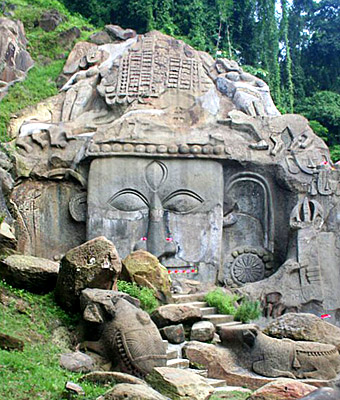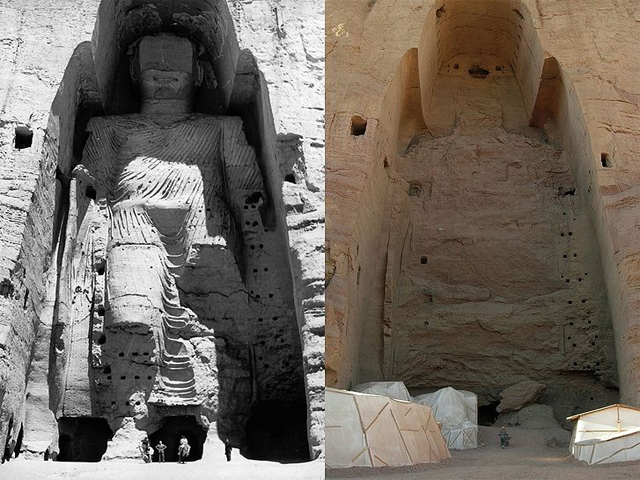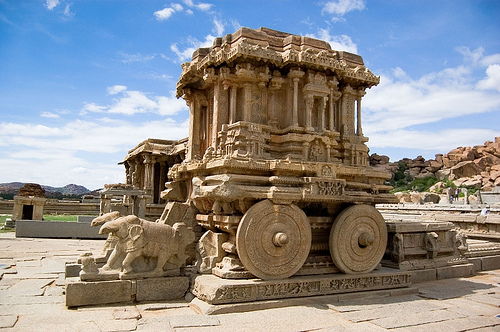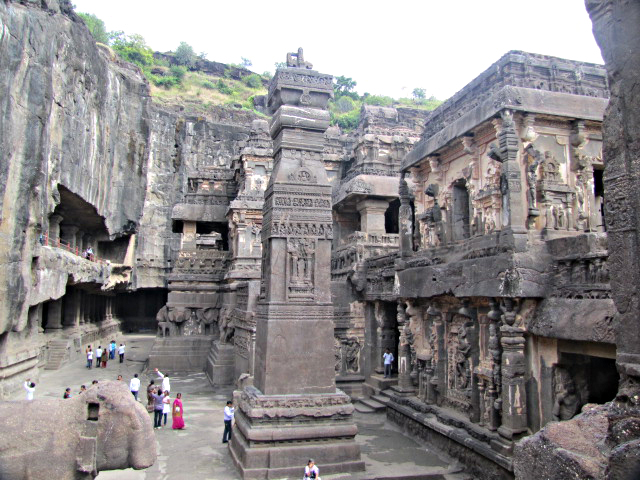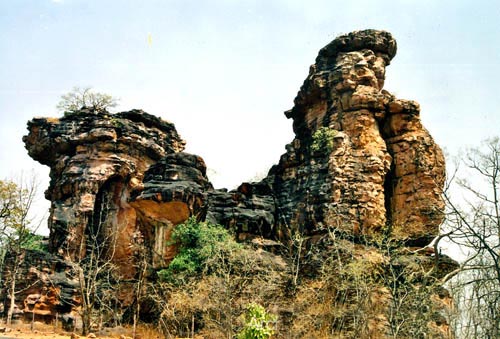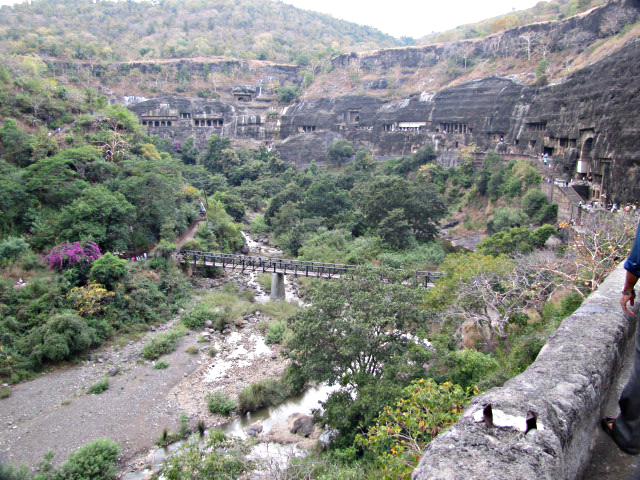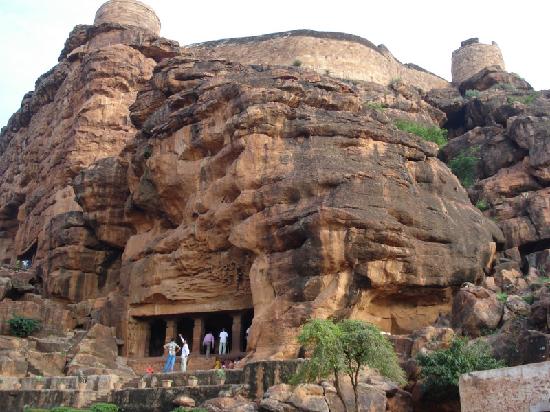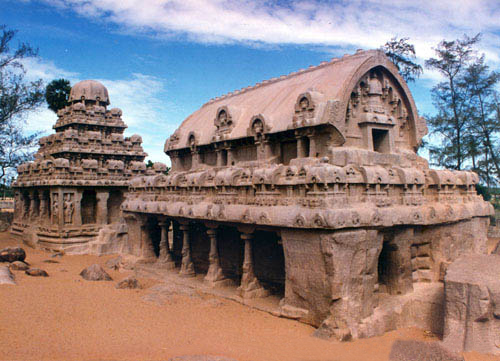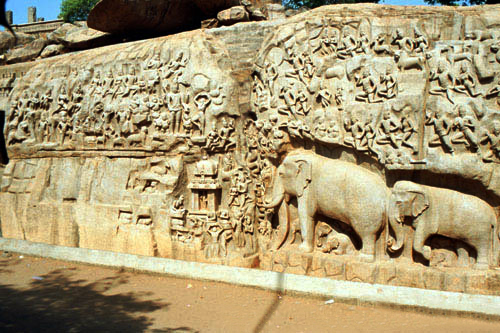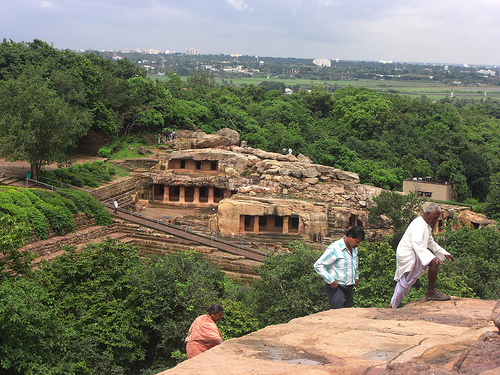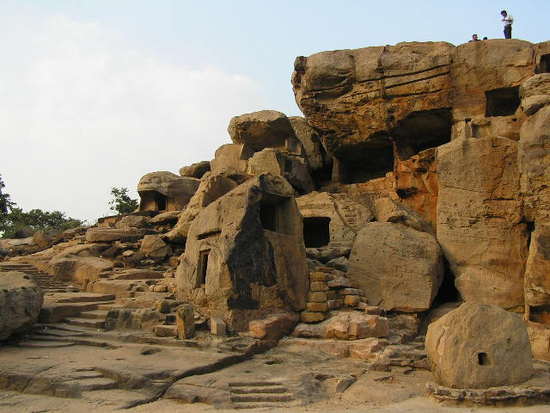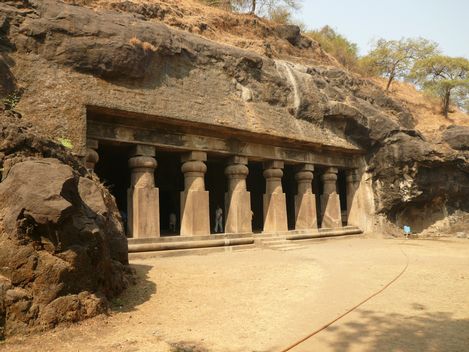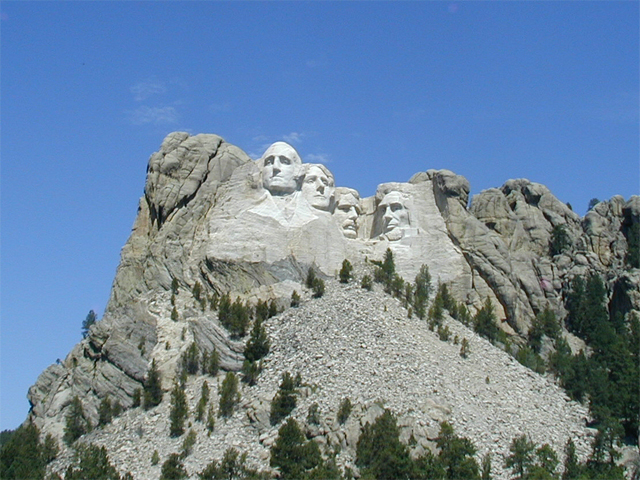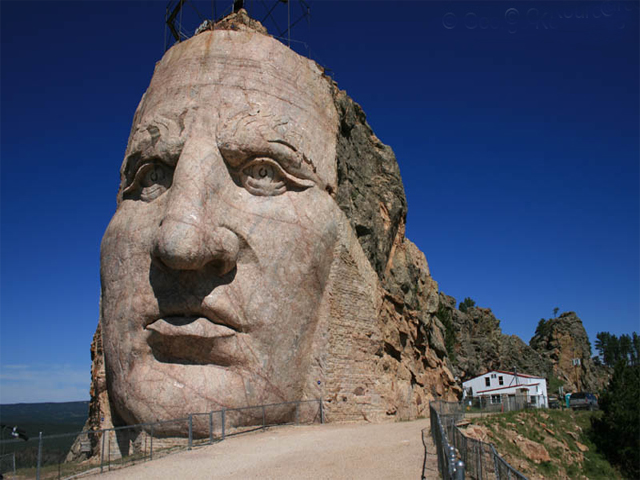Monumental rock carving has been traditionally practiced in India and abroad. In India, rock
carving was a most popular creative mode between the second century BC and the eighth
century AD though its impact continued well beyond this time span. The richest expression of
the art form in India is probably the rock cut temples and sculptures of Ellora, with the Buddhist
series from the sixth to the eighth centuries AD and the Jain series from the eighth to thirteenth
centuries AD. The monasteries, halls of prayer and the monks' living quarters in Ajanta, with
chiselled sculptures, completed between the second century BC and 650 AD are further
examples.
Another example is the great cave of Elephanta, supposed to have been carved between the end
of the eighth and the beginning of the ninth century AD, as are the cave-mandapas of
Mahabalipuram, with the sculptures within and in relief, dated to 625-74 AD. The decline of the
tradition after the eighth century AD has never been explained, but the tradition of smaller
sculptures in stone bear testimony to the tradition.
The traces of this mode are also vividly apparent in the international canvas. The Bamiyan
(fourth-fifth centuries BC) in Afghanistan and the Petra (31 BC) monument near
Amman are even older. Monuments like Mount Rushmore (1927-41 AD) and Crazy Horse
(1948-98), both in South Dakota, U.S.A. are modern examples of the same art. Though the technique used in the present
project can be seen as a revival of our ancient rock carving
tradition, the concept is original in its conscious deviation from the religious or political
orientation of all earlier landmarks of the art of rock-carving. The Pakhipahar is conceived
within a more secular and democratic ethos, in its celebration of common humanity and its
aspirations, its yearning for unity, peace, solidarity, friendliness and harmony.
